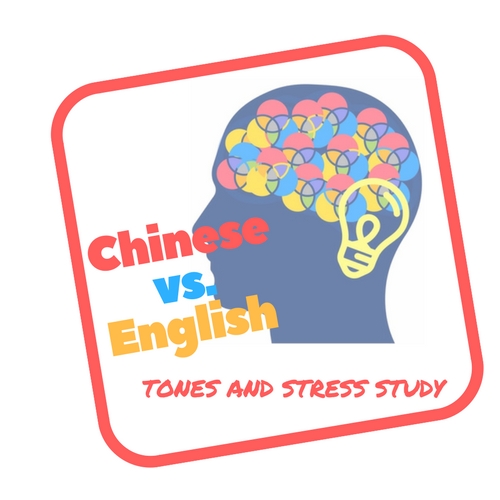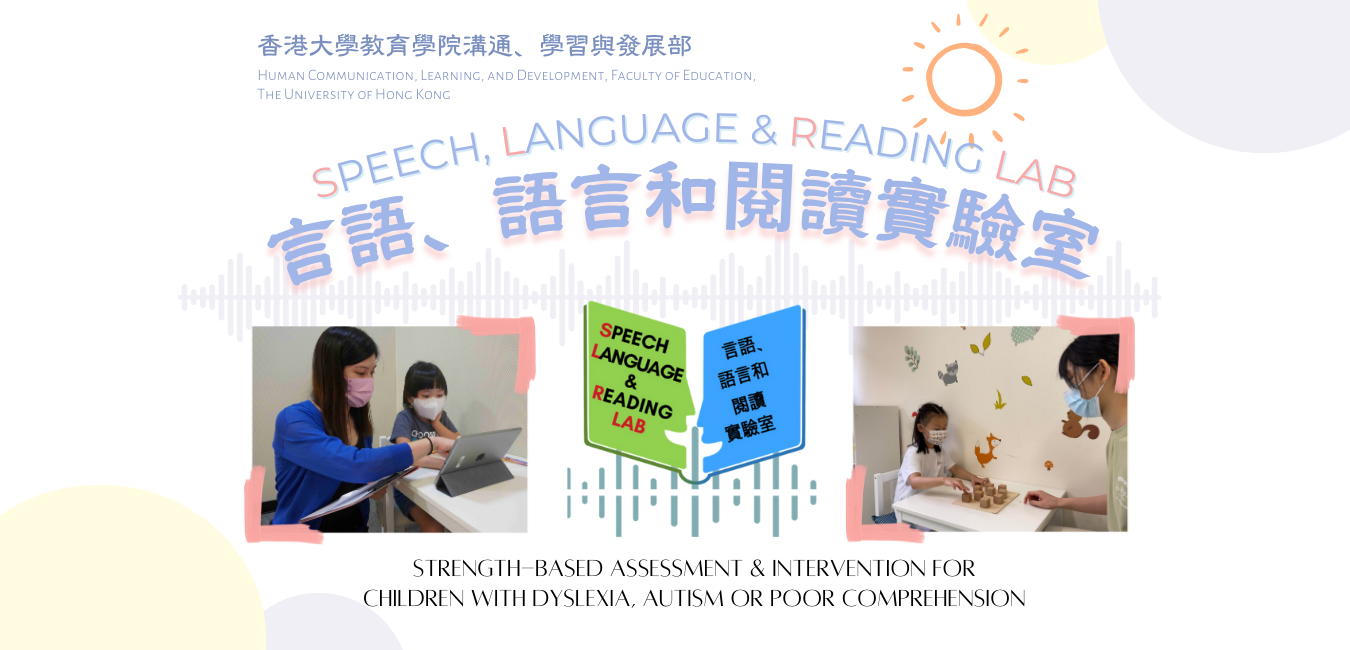 |
Becoming a Skilled Comprehender in Both Chinese and English: Prosodic Sensitivity and Working Memory in Bilingual Children’s Reading Comprehension Development Comprehension is the goal of reading (Snow, 2002), yet we know little about how to best support it. This lack of knowledge is even more acute for bilingual children, such as Hong Kong Chinese children, who are learning to read Chinese and English in parallel. We aim to investigate this issue by examining the contributions of two critical factors, prosodic sensitivity and working memory, in reading comprehension. This three-year longitudinal study is supported by the Hong Kong Research Grants Council (RGC)/Early Career Scheme. Assessments of word reading efficiency, vocabulary knowledge, working memory, oral reading fluency, prosodic sensitivity, and reading comprehension in Chinese and English are administered to our participants once a year. We have completed the second-year’s data collection. The third-year’s data collection will start in January 2017. |
 |
Discovering Hidden Regularities in Print: Chinese Dyslexic Children’s Statistical Learning of Sublexical Orthographic Regularities. Reading Chinese necessitates a process of cracking characters into their sublexical orthographic units (i.e., semantic and phonetic radicals) in order to decipher the meaning and sound of each character. A failure of this process may result in serious problems in reading acquisition. Indeed, Chinese children with developmental dyslexia have impaired orthographic representation of characters (Ho et al., 2000). Our recent research suggests that statistical learning, or the individual’s ability to extract statistical regularities of print input, is a plausible mechanism underlying Chinese orthographic learning (Tong & He, 2017). Yet, the question of whether Chinese children with dyslexia are impaired in statistical learning of Chinese orthographic regularities remains unclear. This project aims at comparing the statistical learning of Chinese orthographic regularities (i.e., positional, phonetic and semantic regularities) between Chinese children with dyslexia and Chinese children who have no reading difficulties. This project is supported by the Hong Kong Research Grants Council (RGC)/General Research Fund. We are currently in the process of recruiting participants. <View Flyer> <Click here to apply> |
|
Unraveling the myth of bi-modal processing in deaf children: the roles of language, cognitive, and sign language abilities to Chinese reading comprehension and the time course of sign language processing. Deaf is a unique group of bi-modal bilinguals who use sign language for daily communication, while use the written format of spoken language to write and read. Though that the reading comprehension abilities of deaf children are far more below comparing to hearing counterparts have been recognized over decades, the underlying reading mechanism of deaf is still poorly understood. In the meanwhile, how sign language automatic process and what is the time course of visual language processing intrigue our interest. This project takes the initial step of explore: (1) how linguistic and cognitive factors contribute to reading comprehension of bi-modal bilingual deaf; (2) the time course of pre-attentive processing of lexical signs. <View Flyer> <Click here to apply> |
 |
Are All Lexical Tones Perceived Equally by Cantonese-Learning Infants? This project aims to expand our current understanding of lexical tone perception in Cantonese-learning infants. The results generated from this project will provide us with more information regarding the mechanism behind the acquisition of lexical tones in Cantonese. The current project may arouse parents’ awareness of their babies’ language acquisition process. With such awareness, parents may be able to keep an eye on their children’s language learning process and therefore identify language problems (if any exist) at an early stage.
<View Flyer> <Click here to apply> |
 |
Seeking the Onset of Infant Speech Development: An Explanation of Developmental Mechanisms from the Perspective of Asian Languages. Principle Investigator: Mazuka, R This project tests the perceptual narrowing hypothesis, which is derived from studies of English-speaking and/or other European language-speaking infants, by comparing the speech development of Cantonese-, Thai-, Japanese-, and Korean-speaking infants. We aim to evaluate whether perceptual narrowing applies equally to these Asian language-speaking infants. This project is supported by the Japan Society for the Promotion of Science. We are currently preparing stimuli for the experiments. |
 |
Cracking Chinese Characters Chinese word reading is an intricate process that involves decoding various sources of information – or cracking the code of Chinese characters. Most psycholinguistic research has been largely focused on describing the process of word reading in alphabetic languages such as English. We know very little about how Chinese language learners use different cues of semantic and phonetic radicals to recognize Chinese characters. The goal of this project is to examine how expert Chinese readers and novice Chinese readers process Chinese characters. For the purposes of this project, we are looking for 3 different groups to participate in our study: 1. Foreigners (non-native Chinese children and adults) who are trying to learn to read and write Chinese characters; 2. Native Cantonese speakers who were born and raised in Hong Kong and read traditional Chinese script; 3. Native Mandarin speakers who were born and raised in mainland China and read simplified Chinese script. We are running a series of experiments that involve reading Chinese characters, looking at character-like symbols, and matching symbols to pictures. Experiments occur at the HKU Campus, and usually take 30-60 minutes. Participants will be reimbursed for their travel expenses. We hope you can join this exciting study and help us crack the code of Chinese characters. |
|
Effect of Music Training of Second Language Acquisition A variety of linguistic and extra-linguistic factors have been documented to influence second language (L2) acquisition. The present research aims to investigate the benefits of musical abilityto L2 learning at a higher linguistic level (i.e. tone word identification). Despite the fact that L2 learning commonly begins at an early age, the effect of music on L2 acquisition studies on children have been. To date, there are no studies exploring musical effects on tonal L2 acquisition in Cantonese-speaking groups. As such, this study will compare the performance of musical aptitude, linguistic pitch, and, at a higher linguistic level, tone word learning among musicians and non-musicians after ruling out between-group differences in cognitive measures such as general intelligence and working memory. Another research aim is to investigate the predictors of second language learning success in the Cantonese-speaking population. Findings of this research would broaden our understanding of the relationship between music and language, and pave the way for the clinical application of new kinds of language learning options for children and adults interested in acquiring tonal languages. |
|
A comparison of prosodic production in Cantonese and English among Cantonese-English bilingual children In Hong Kong, children are expected to become proficient in both Cantonese and English. However, this is challenging due to the striking structural differences between Cantonese and English in terms of lexical prosody. Cantonese is a tone language whereas English is a stress language. This project aims to examine how Cantonese-English bilingual children incorporate the two distinct prosodic systems simultaneously into their phonology inventory. Spectrographic analyses of fundamental frequency (f0) are conducted to compare Cantonese-English bilingual children’s prosodic production in Cantonese and English, with the hope of shedding light on the issue of whether language-constraints would emerge and therefore complicate the prosodic production of the second language. This research was fully supported by the Early Career Scheme (ECS) of the Hong Kong Government Research Council (27402514) awarded to Dr. Shelley Tong. |
| |
Understanding Chinese High-Functioning Autistic Children: The Simple “Mind” of Reading Children with high-functioning autism spectrum disorders (HFASD) were reported to be exhibit hyperlexia with precocious decoding abilities but poor reading comprehension in alphabetic languages (e.g., Nation, Clarke, Wright, & Williams, 2006; Newman et al., 2007). However, this profile has never been explored in Chinese, a logographic script. Furthermore, the contributing factors of this decoding-comprehension discrepancy remain unclear. This study aims at exploring the hyperlexia profile in Chinese school-aged children with HFASD and further examines whether theory of mind (ToM) could explain their narrative reading comprehension performance. We have finished analyzing the data from this project. |
 |
Cracking the Neural Codes of Suprasegmental Speech Perception: Perception of Chinese Tone and English Stress by Chinese-English Bilingual Adults This project aims to expand current theoretical models of native and non-native speech perception to accommodate suprasegmental information, such as lexical tone and stress. This research topic is directly relevant to the people of Hong Kong, most of whom are bilinguals who learn and become fluent speakers of Cantonese and either later or at the same time learn additional languages. Native-like suprasegmental speech perception is most easily acquired during early childhood but becomes far more difficult after this period. The current research aims to shed light on this process and ultimately benefit language learners and those who help them learn. This project was supported, in part, by the ECS/RGC Early Career Scheme, The Hong Kong Special Administrative Regions Research Grants Council (27402514), the Seed Funding Programme for Basic Research and Education Faculty Research Fund from The University of Hong Kong to Dr. Shelley Tong, and the Education Faculty Research Fund from The University of Hong Kong to Choi Tsun Man William. |
